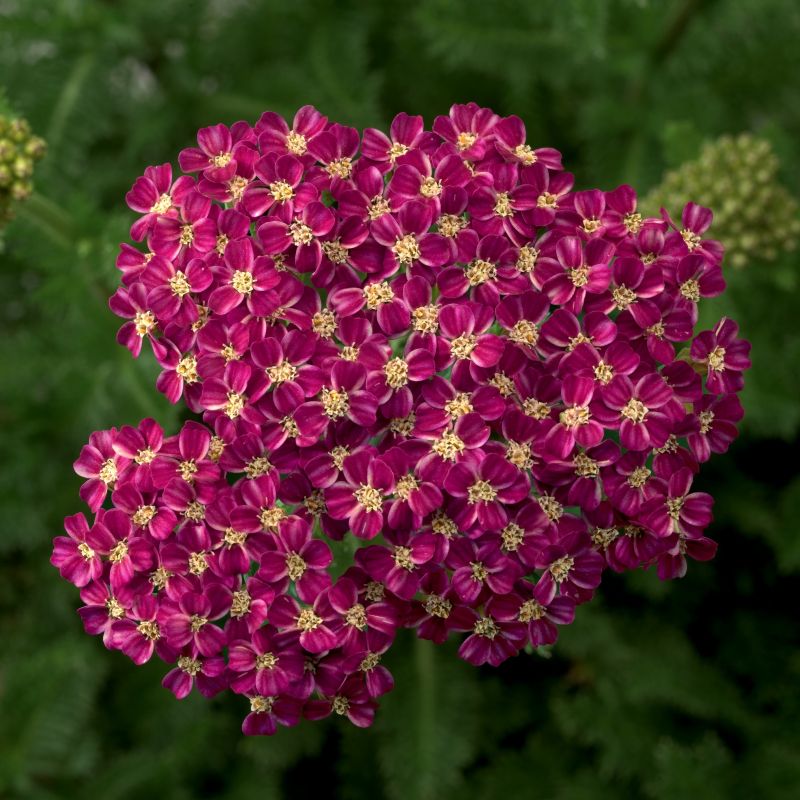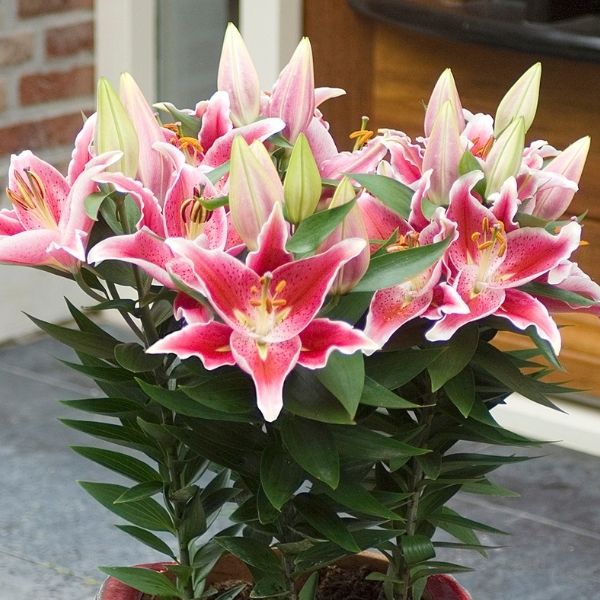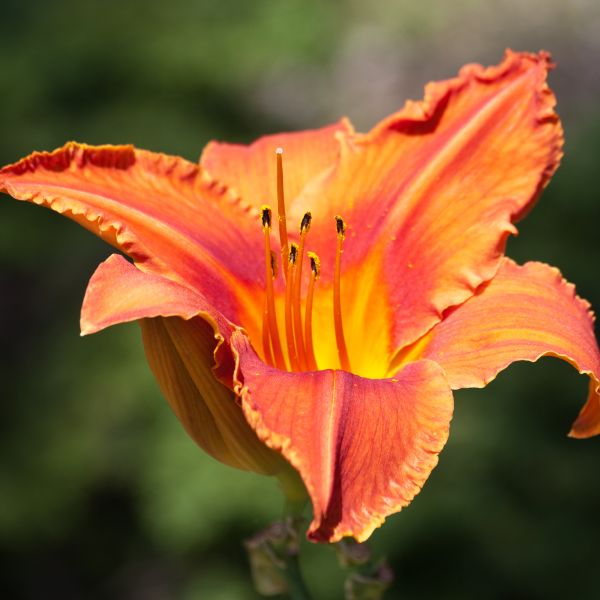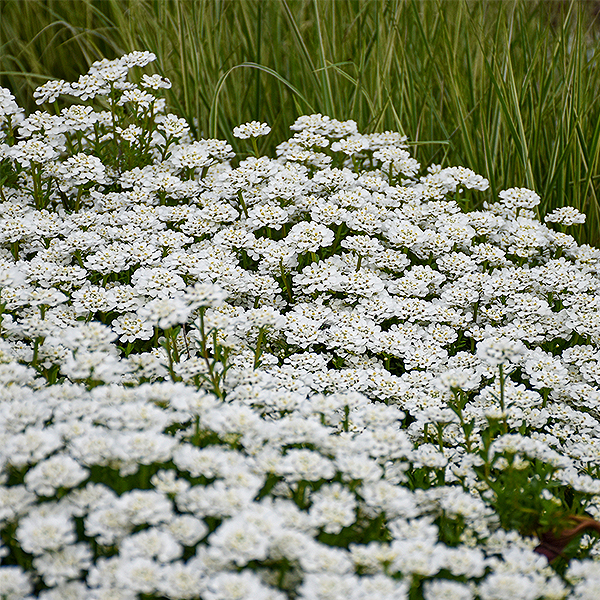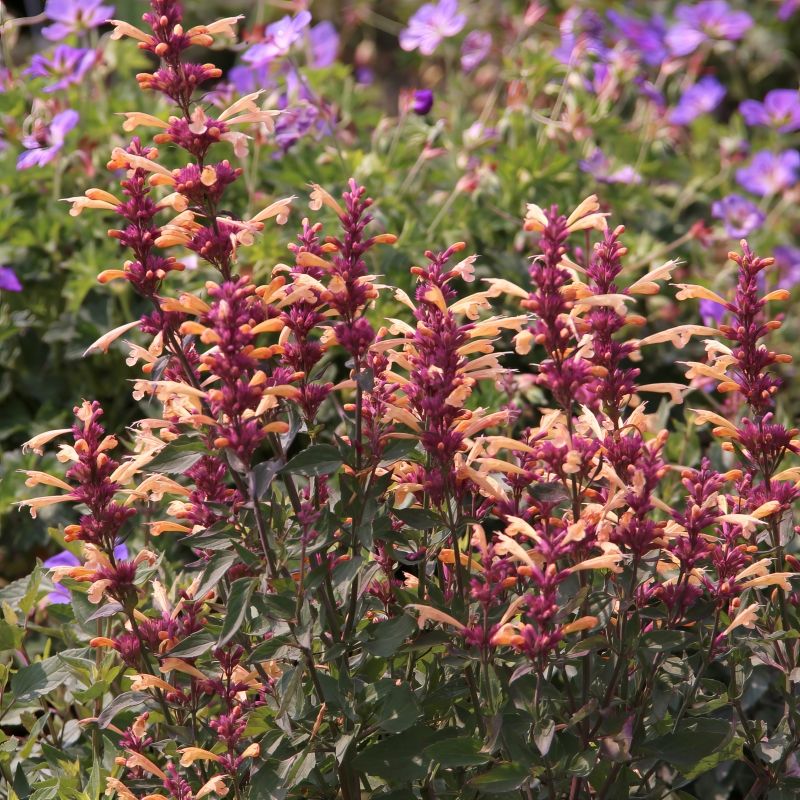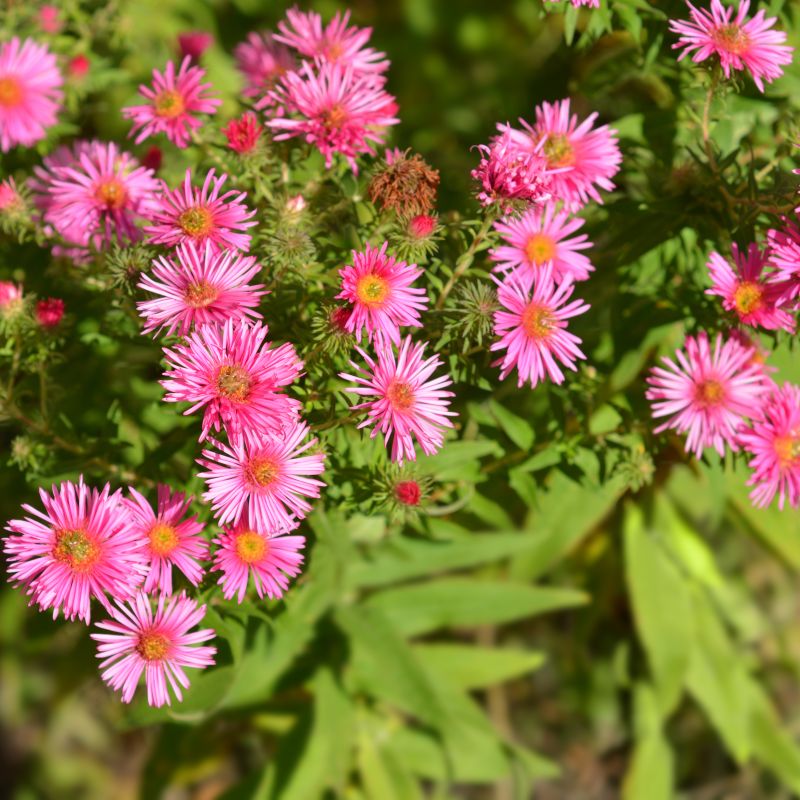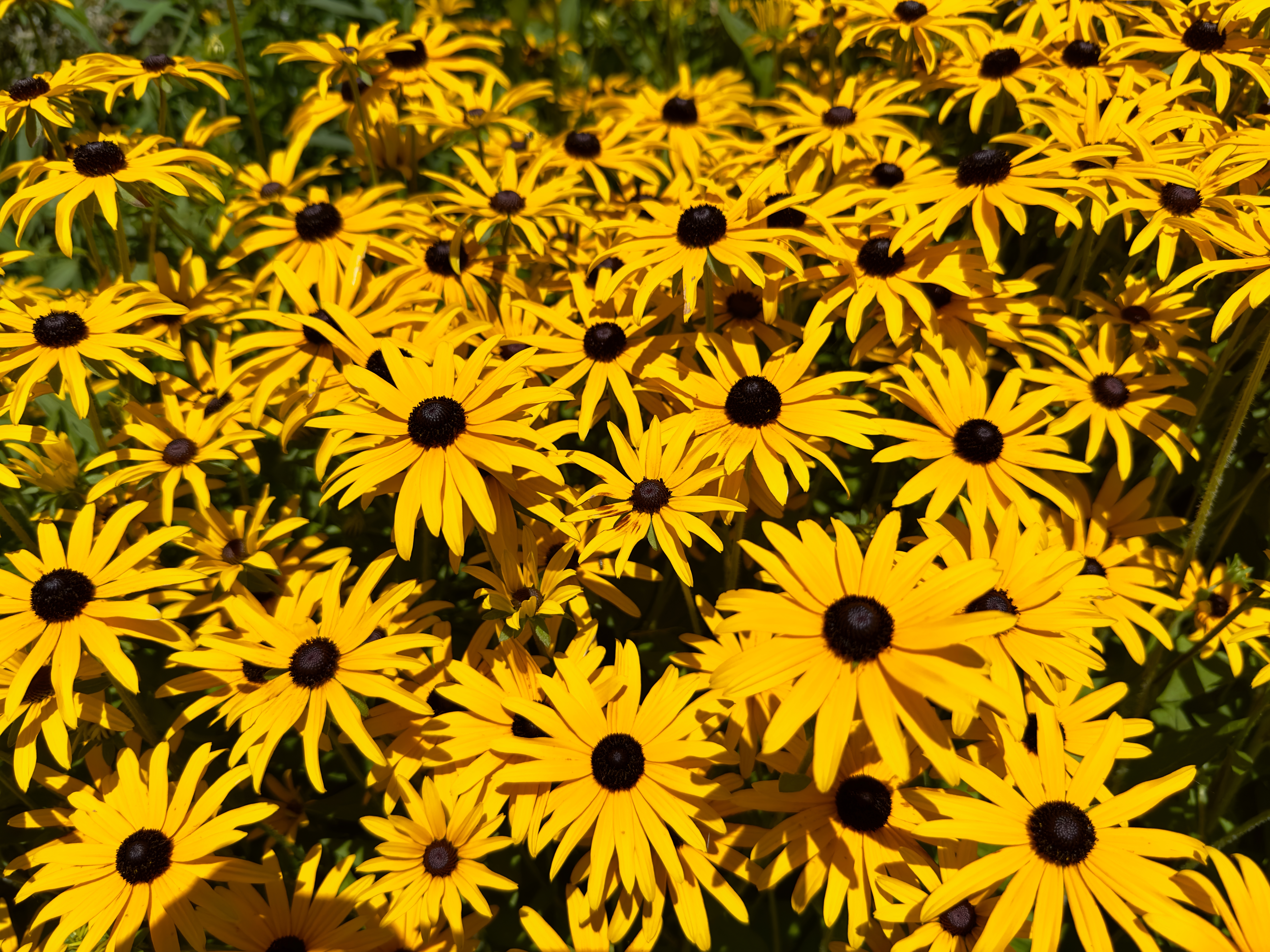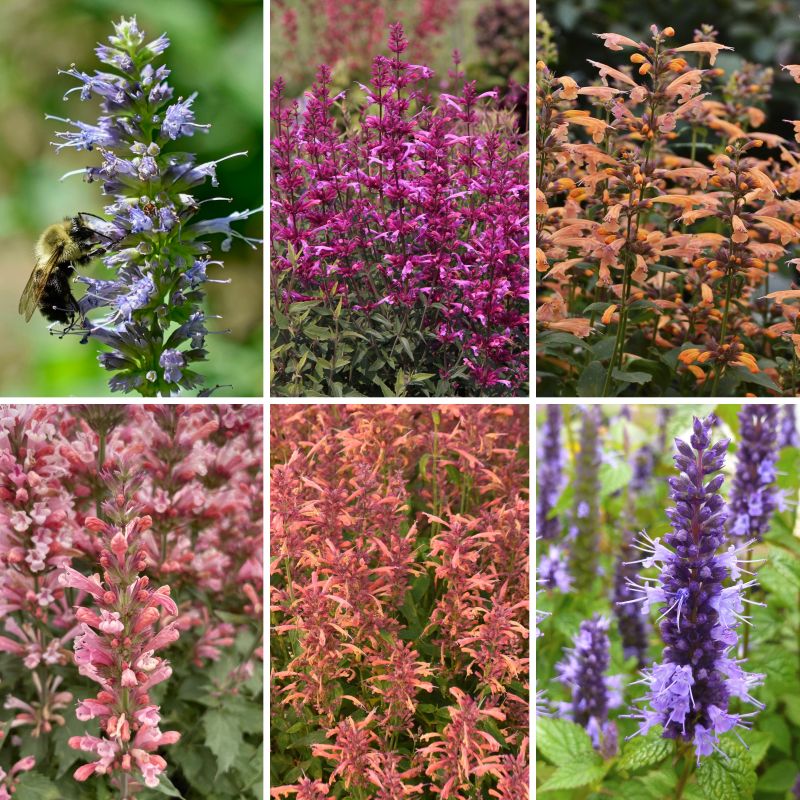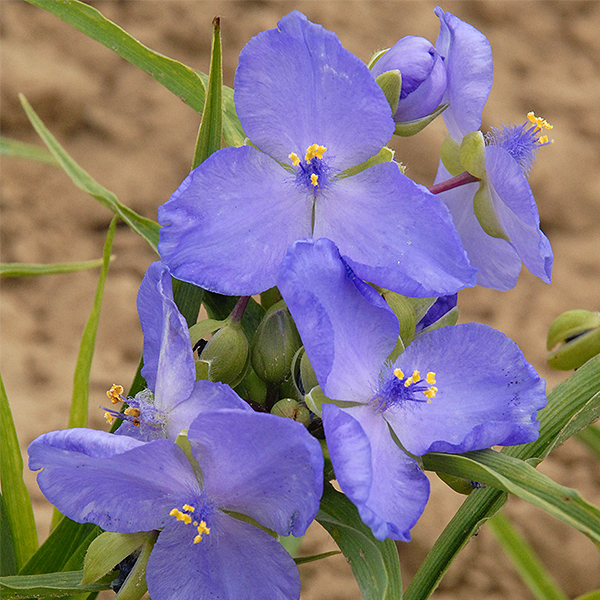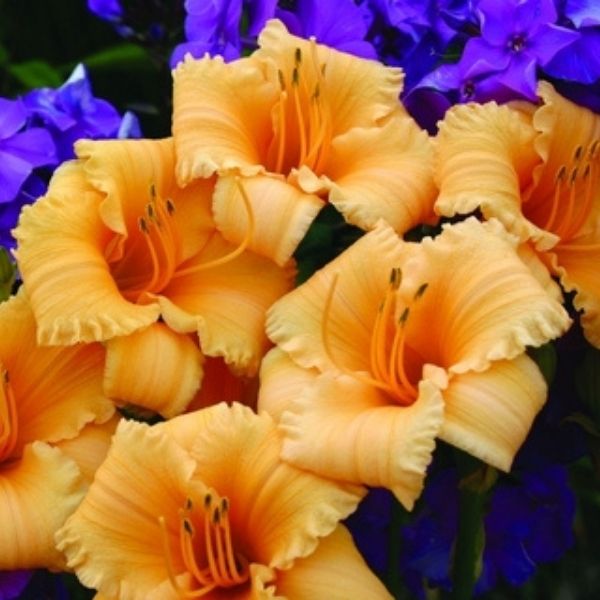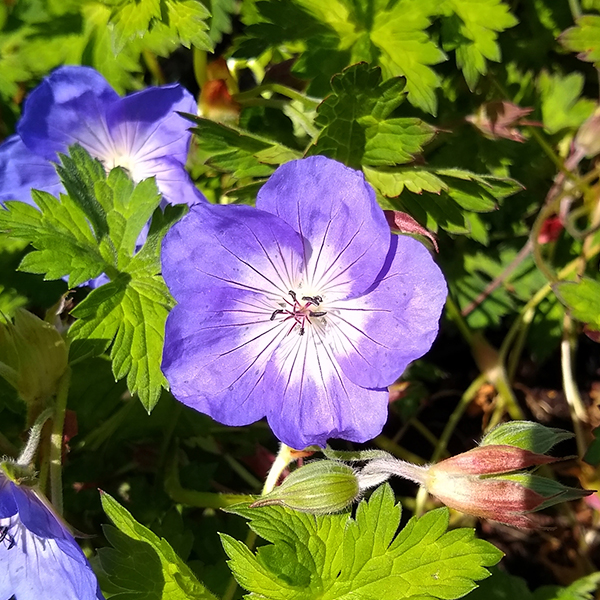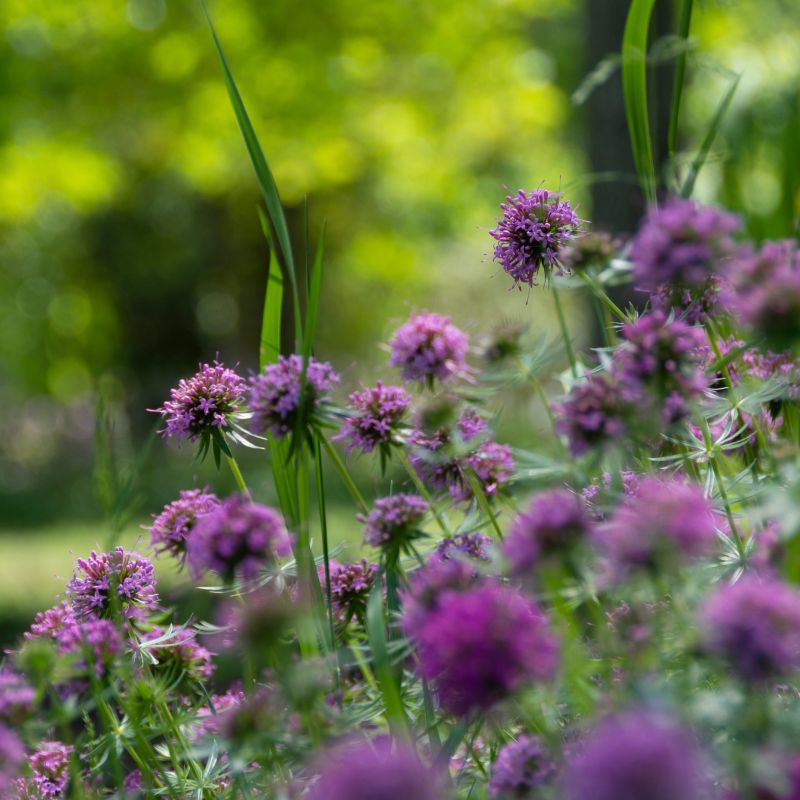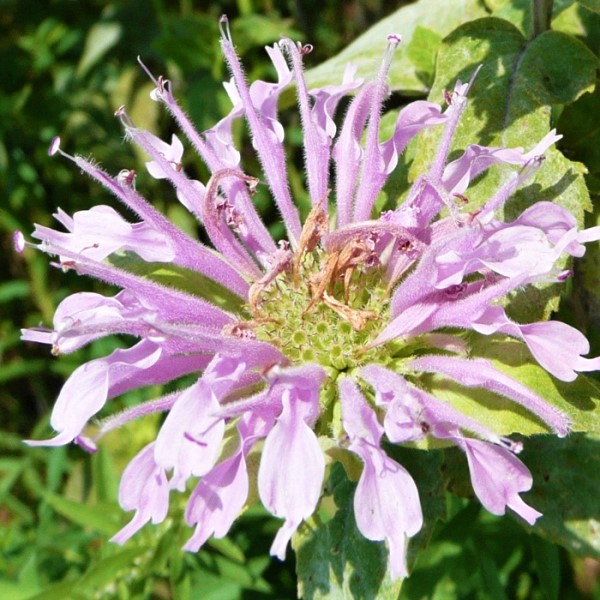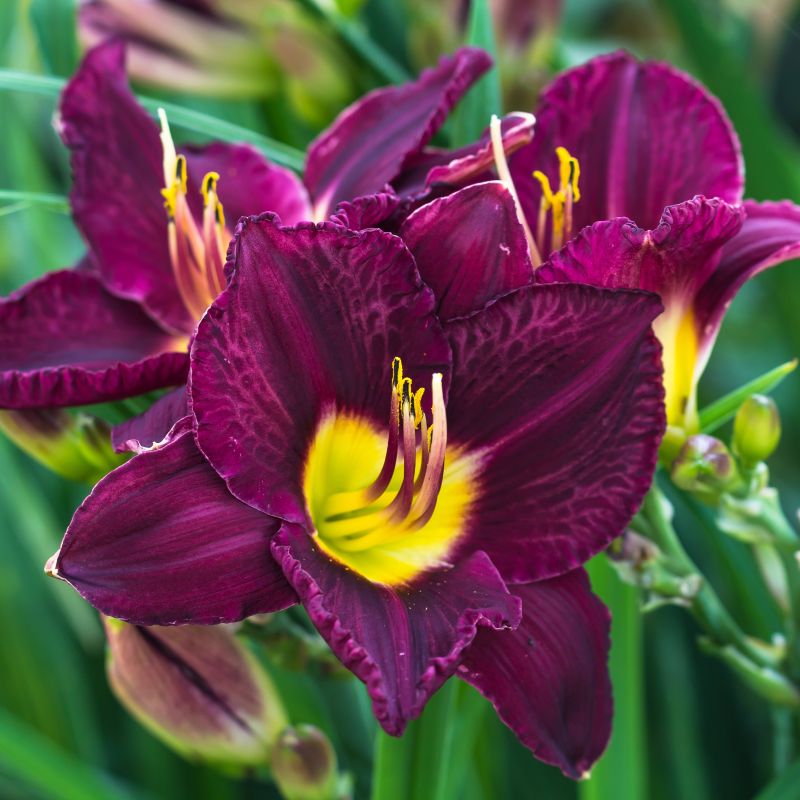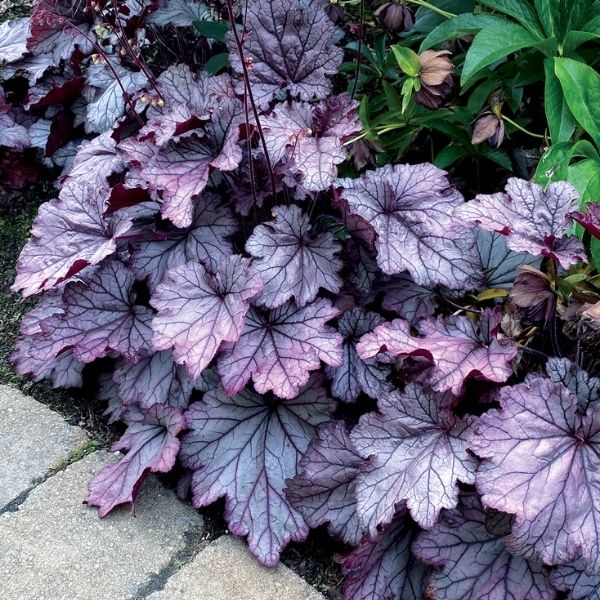

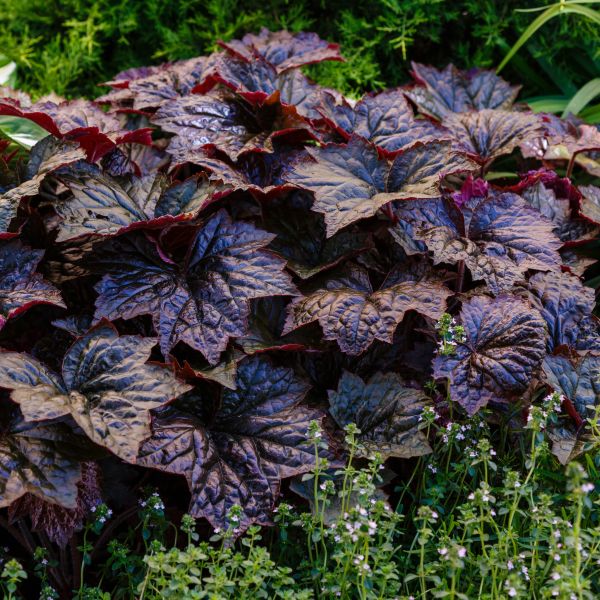
Spellbound Coral Bells
Heuchera 'Spellbound'
7 reviews
Spellbound Coral Bells
Heuchera 'Spellbound'
7 reviews
1 Gallon
We are sorry, product is currently out of stock due to seasonal availability. Please check the "Related plants available in your area" section below
Why Spellbound Coral Bells?
Spellbound Coral Bells are a popular perennial plant with unique foliage that changes color throughout the season. The leaves are a mix of deep purples and greens with silver markings, making them stand out in any garden. They also produce delicate pinkish-white flowers that bloom on tall stems in the spring. These low-maintenance plants are perfect for planters, borders, or landscapes, and thrive in full sun or partial shade.
Related plants available in your area
Sunlight
Spellbound Coral Bells thrive in partial shade to full shade conditions.
Watering
Spellbound Coral Bells (Heuchera 'Spellbound') should be watered regularly, keeping the soil evenly moist. It prefers well-draining soil but should not be allowed to dry out completely. Avoid overwatering, as this can cause root rot.
Fertilizing
Spellbound Coral Bells prefer a well-draining soil enriched with organic matter. Adding compost or well-rotted manure to the soil before planting is recommended. Fertilize lightly in spring with a balanced slow-release fertilizer or a low-nitrogen fertiliz
Discover the Magic of Spellbound Coral Bells
Unleash the enchantment of nature in your garden with Spellbound Coral Bells! This captivating perennial plant is here to make a statement and transform your outdoor space into a mesmerizing haven of beauty and color. With its magical allure and numerous benefits, Spellbound Coral Bells will leave you spellbound!
Spellbound Coral Bells boast a breathtaking display of vibrant rose-purple leaves with deep purple veins and pale yellow flowers. This striking burst of color will inject life and personality into any garden or landscape, making a stunning visual impact.
Unlike many other plants, Spellbound Coral Bells contribute to the beauty of your garden throughout the year. Even in winter, its evergreen foliage remains, providing a touch of color when other plants are dormant. Whether it's spring, summer, fall, or winter, Spellbound Coral Bells ensure your garden is captivating all year long.
Don't let the magic fool you - Spellbound Coral Bells are easy to grow! With low maintenance requirements, this perennial plant is perfect for both experienced gardeners and beginners alike. Simply plant it in well-drained soil, provide a moderate amount of water, and watch it flourish with minimal effort.
Spellbound Coral Bells is a versatile addition to any garden. Its compact size and mounding habit make it ideal for borders, rock gardens, containers, or as a focal point in your landscape design. With unlimited possibilities, let your creativity soar and create a captivating outdoor oasis.
Be prepared to welcome beautiful hummingbirds and butterflies to your garden. Spellbound Coral Bells act as a magnet for these vibrant creatures, adding an extra touch of life and animation to your outdoor space.
Don't miss out on the opportunity to create a magical atmosphere that will leave your friends and neighbors in awe.
Order today and experience the enchantment of Spellbound Coral Bells in your garden!
Plant Information:
| Botanical Name: | Heuchera 'Spellbound' |
| USDA Zones: | 4 - 9 |
| Water: | Moderate |
| Exposure: | Full Shade |
| Soil Needs: | Well Drained |
| Mature Height: | 8 - 10 inches |
| Mature Spread: | 15 - 18 inches |
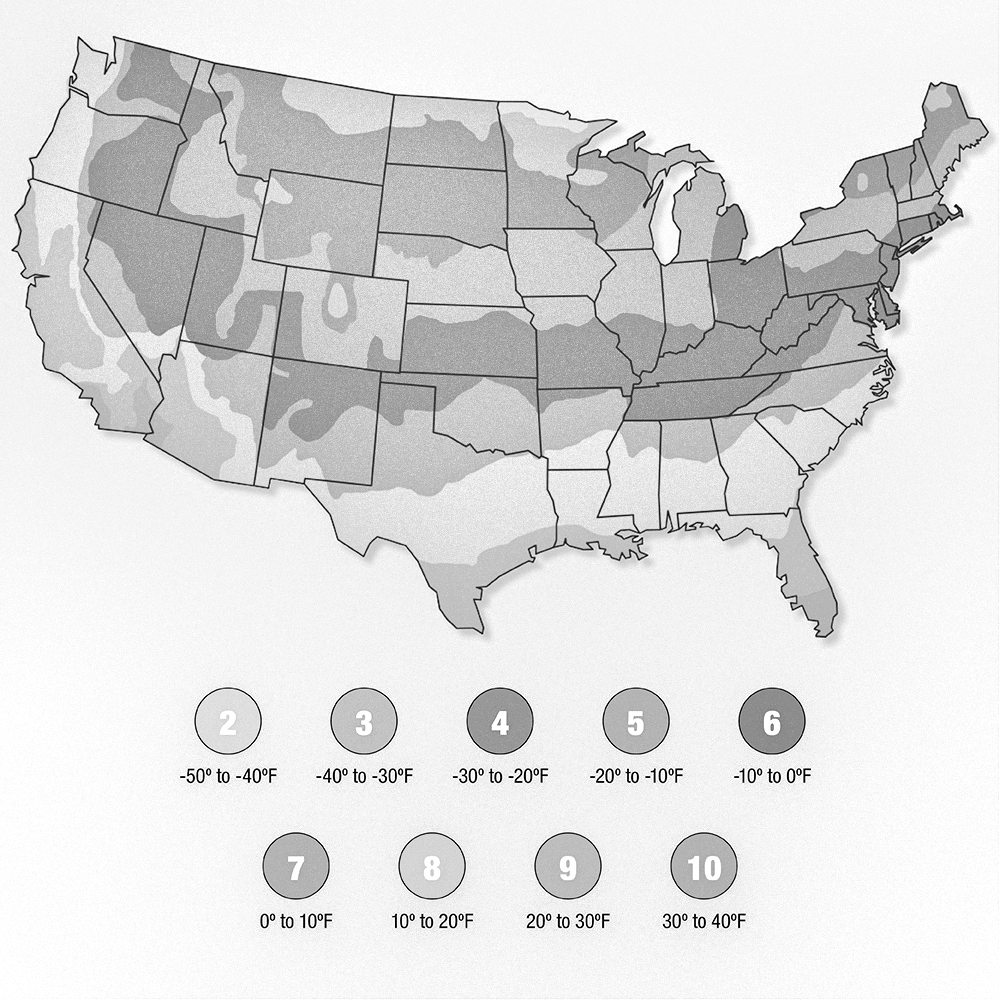


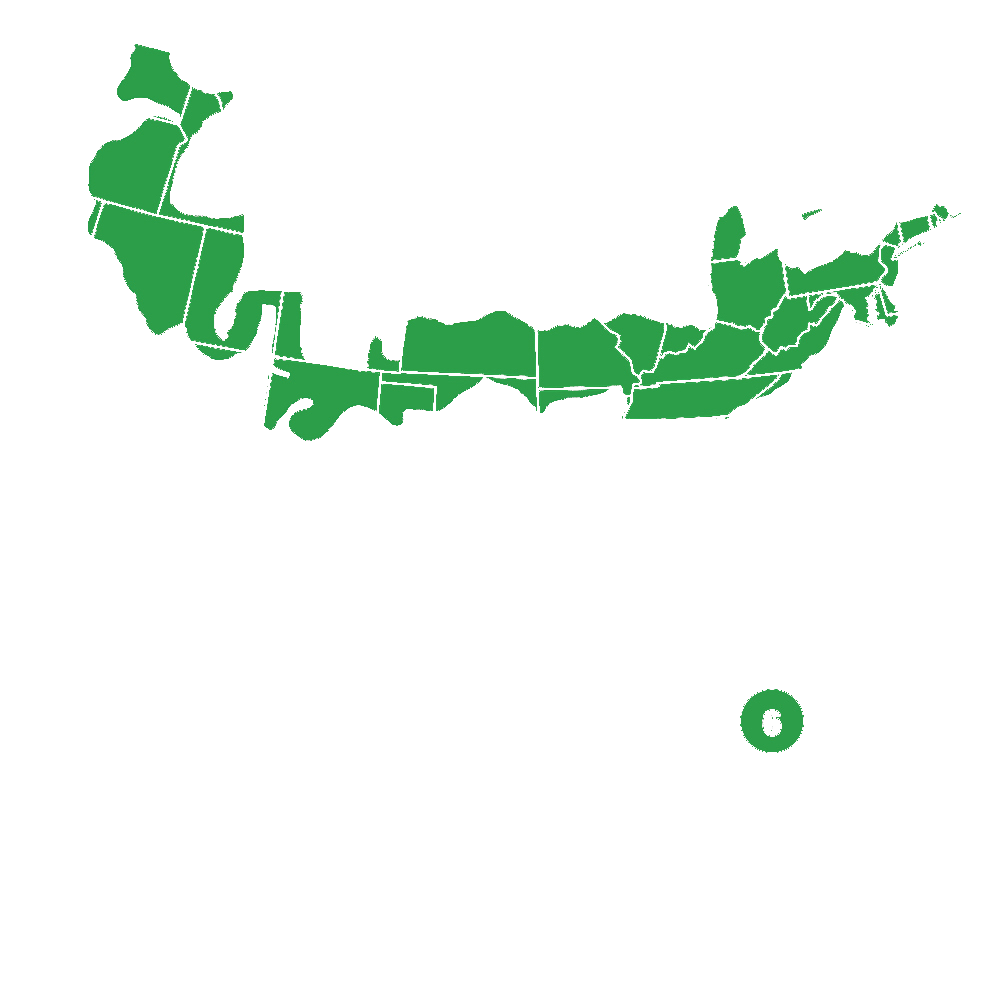

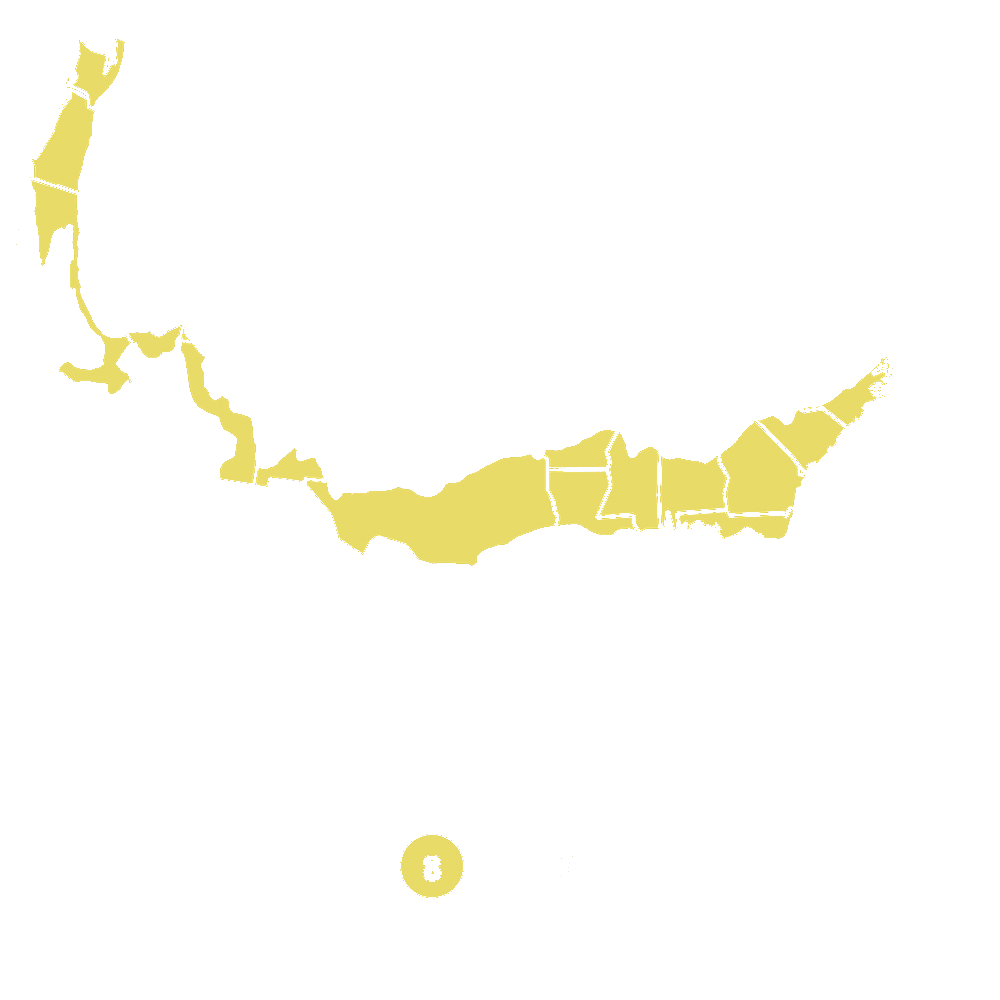
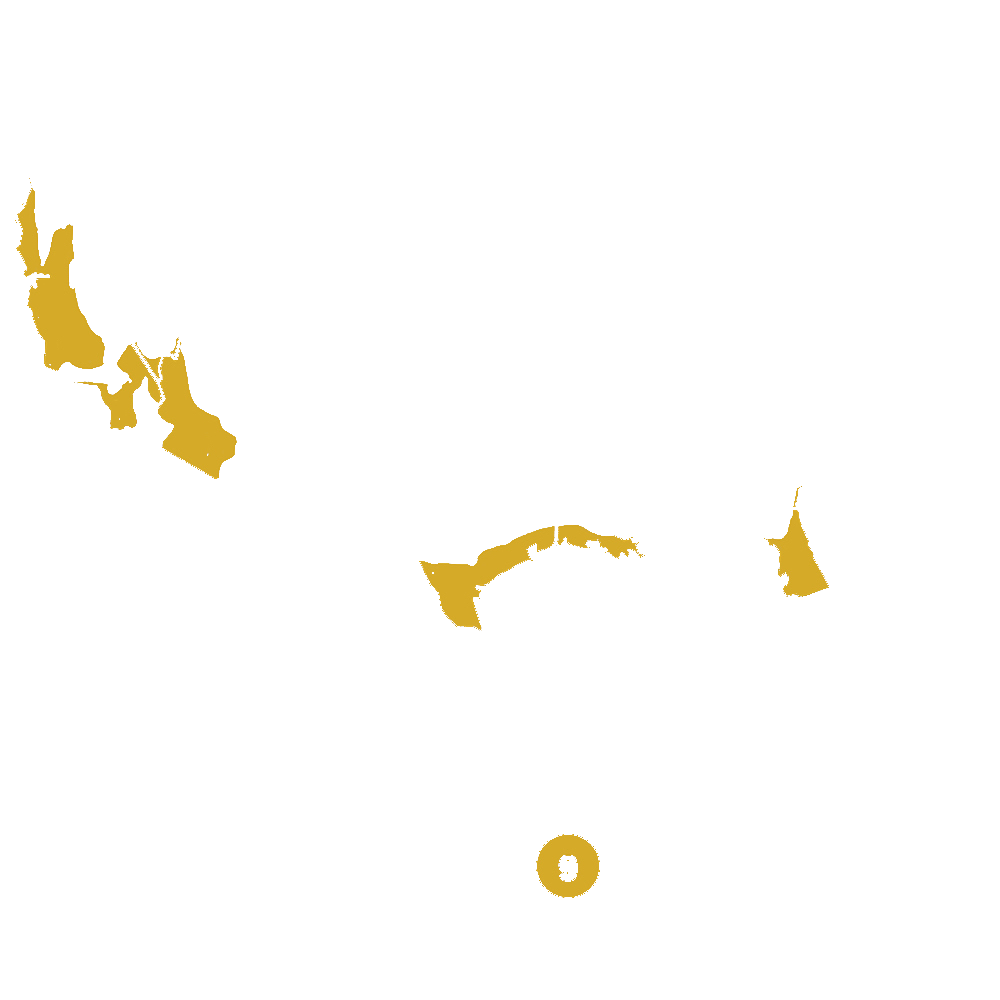
Pollination Info
Spellbound Coral Bells (Heuchera x 'Spellbound') is a perennial plant that belongs to the Saxifragaceae family. It is a hybrid variety that attracts pollinators like bees, butterflies, and hummingbirds. The plant typically blooms in early summer, producing delicate pinkish-red flowers that are held high above the foliage on tall, wiry stems.
The flowers are hermaphroditic, which means they have both male and female reproductive organs. They rely on pollinators to transfer pollen between the flowers, which is essential for fertilization and seed production. The pollen of Spellbound Coral Bells is sticky and heavy, so it is mostly transferred by bees and other insects that land on the flowers to collect nectar.
The foliage of Spellbound Coral Bells is also attractive to some pollinators. The leaves are heart-shaped and have a bold dark purple color that contrasts beautifully with the pinkish-red flowers. Some species of butterflies use the leaves as a resting place, while others lay eggs on the underside of the leaves, where the caterpillars can feed on the plant.
To attract pollinators like bees and butterflies to Spellbound Coral Bells, it is best to plant it in a sunny or partially shaded location with well-drained soil. The plant also benefits from regular watering and fertilization. Adding mulch around the base of the plant can help retain moisture and suppress weeds, which can compete with the plant for nutrients and water.
FAQ
Spellbound Coral Bells (Heuchera x 'Spellbound') FAQ
General Information:
- What is Spellbound Coral Bells?
- What is the scientific name of Spellbound Coral Bells?
- What is the origin of Spellbound Coral Bells?
- What is the hardiness zone of Spellbound Coral Bells?
- What is the mature height and width of Spellbound Coral Bells?
- What is the growth rate of Spellbound Coral Bells?
Care and Maintenance:
- Where should I plant Spellbound Coral Bells?
- How often should I water Spellbound Coral Bells?
- What type of soil does Spellbound Coral Bells prefer?
- Should I fertilize Spellbound Coral Bells? If so, how often and with what?
- How do I prune Spellbound Coral Bells?
- Does Spellbound Coral Bells require any special care in the winter?
Pests and Diseases:
- What are some common pests that affect Spellbound Coral Bells?
- What are some common diseases that affect Spellbound Coral Bells?
- How can I prevent and treat pest and disease problems in Spellbound Coral Bells?
Propagation:
- How can I propagate Spellbound Coral Bells?
- When is the best time to propagate Spellbound Coral Bells?
- What are some common problems when propagating Spellbound Coral Bells?
General Information:
- What is Spellbound Coral Bells? Spellbound Coral Bells is a perennial plant known for its stunning foliage that comes in a variety of colors. It is frequently used for garden borders, mass plantings, and as a ground cover plant.
- What is the scientific name of Spellbound Coral Bells? The scientific name of Spellbound Coral Bells is Heuchera x 'Spellbound'.
- What is the origin of Spellbound Coral Bells? Spellbound Coral Bells is a hybrid plant that was created by crossing two Heuchera species, Heuchera villosa and Heuchera micrantha.
- What is the hardiness zone of Spellbound Coral Bells? Spellbound Coral Bells is hardy in zones 4-9.
- What is the mature height and width of Spellbound Coral Bells? Spellbound Coral Bells typically grows to a height of 10-12 inches with a spread of 12-14 inches.
- What is the growth rate of Spellbound Coral Bells? Spellbound Coral Bells has a moderate growth rate.
Care and Maintenance:
- Where should I plant Spellbound Coral Bells? Spellbound Coral Bells prefers partial shade to full shade and well-drained soil. It can also tolerate some sun and dry soil conditions, but may require more frequent watering and may have reduced foliage color in these conditions.
- How often should I water Spellbound Coral Bells? Spellbound Coral Bells prefers moist soil and should be watered regularly, especially during dry periods. However, it should not be overwatered as it may lead to root rot.
- What type of soil does Spellbound Coral Bells prefer? Spellbound Coral Bells prefers well-drained soil that is rich in organic matter. It does not tolerate heavy, poorly drained soils well.
- Should I fertilize Spellbound Coral Bells? If so, how often and with what? Spellbound Coral Bells benefits from periodic fertilization with a balanced fertilizer once or twice a year, typically in the spring and fall. It may also benefit from a light application of compost or organic matter each spring.
- How do I prune Spellbound Coral Bells? Spellbound Coral Bells generally does not require pruning, but you can clip off any dead or diseased leaves as needed. If it becomes too large, you can divide the plant in the early spring or fall.
- Does Spellbound Coral Bells require any special care in the winter? In colder climates, Spellbound Coral Bells may benefit from a layer of mulch or leaves to protect the roots during the winter. However, it is generally hardy and does not require special winter care.
Pests and Diseases:
- What are some common pests that affect Spellbound Coral Bells? Some common pests that may affect Spellbound Coral Bells include aphids, spider mites, and slugs.
- What are some common diseases that affect Spellbound Coral Bells? Some common diseases that may affect Spellbound Coral Bells include leaf spot, rust, and powdery mildew.
- How can I prevent and treat pest and disease problems in Spellbound Coral Bells? You can prevent pest problems by regularly inspecting your plant and promptly treating any infestations. You can also practice good garden hygiene, such as removing dead leaves and debris, to reduce the likelihood of pest infestatio
Planting & Care
Planting Spellbound Coral Bells
Spellbound Coral Bells prefer partial sun to shade and well-drained soil. To plant, dig a hole slightly larger than the root ball and mix in organic matter such as compost or peat moss. Place the plant in the hole and fill with soil, gently tamping down. Water thoroughly.
Caring for Spellbound Coral Bells
Water Spellbound Coral Bells regularly, keeping the soil moist but not waterlogged. Mulch around the base of the plant to retain moisture and suppress weeds. Fertilize with a balanced fertilizer in early spring, and again in midsummer if needed. Deadhead spent flowers to encourage new blooms. Cut back the foliage in late fall or early spring to promote new growth.
Beware of powdery mildew and crown rot, which can affect Coral Bells. To prevent powdery mildew, provide adequate air circulation and avoid overhead watering. To prevent crown rot, ensure the soil has good drainage and avoid overwatering.
Check Out These Verified Customer Reviews:
Customer Reviews
4.7 out of 5 based on 7 reviews
Thank you! Your review has been submitted.
Easy to navigate website, great selection
Thrilled with my purchase, highly recommend
Fast shipping, received within a week
Item has been added to your cart.




